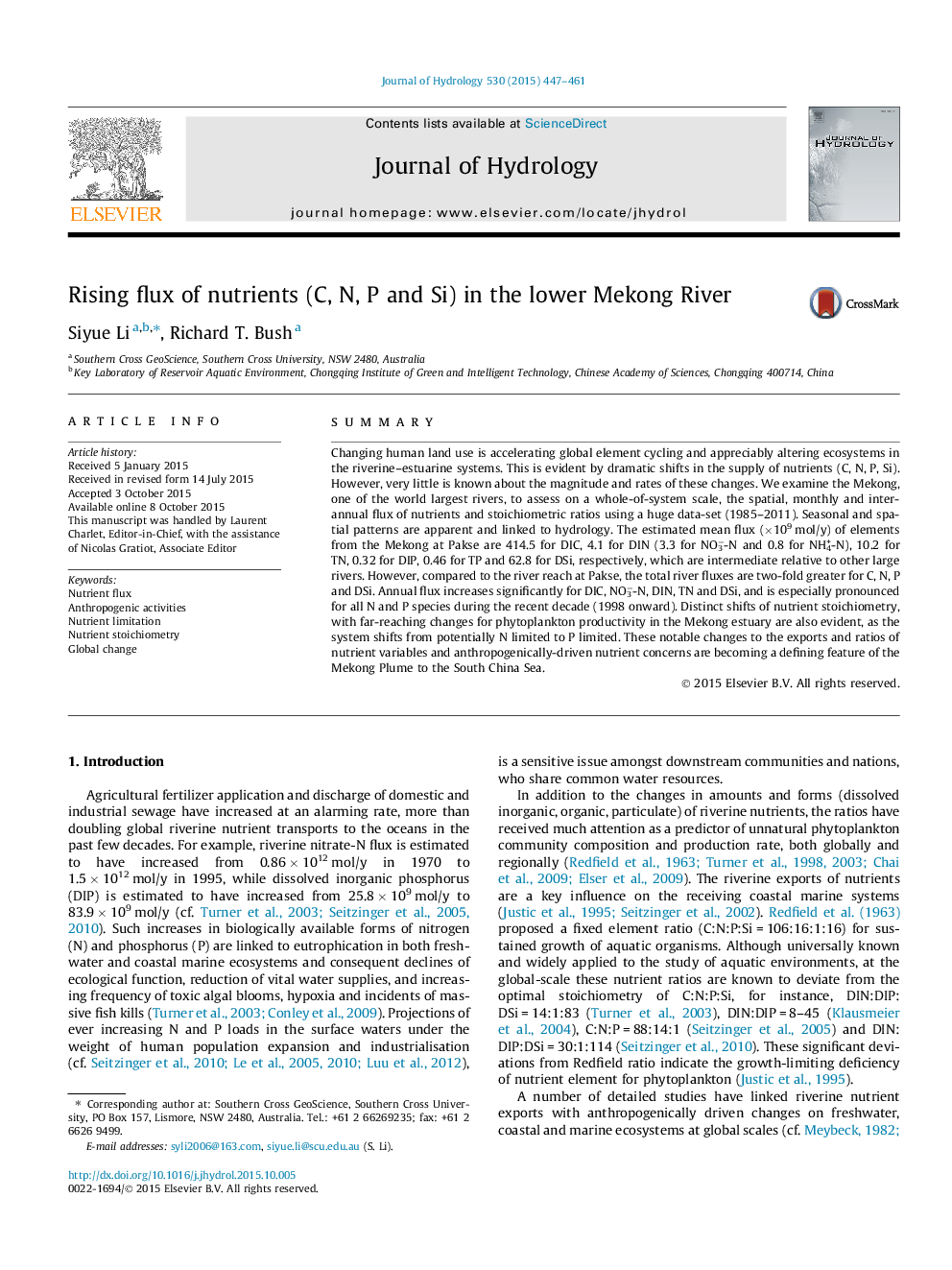| کد مقاله | کد نشریه | سال انتشار | مقاله انگلیسی | نسخه تمام متن |
|---|---|---|---|---|
| 6410219 | 1629921 | 2015 | 15 صفحه PDF | دانلود رایگان |

- Multiple-scale concentrations, stoichiometric ratios and fluxes of nutrients are studied.
- High-flow months show unprecedented contribution to annual nutrient loads.
- Anthropogenic activities significantly increase concentrations and fluxes of nutrients.
- Human activities alter nutrient limitation from N to P for phytoplankton growth.
- Nutrient fluxes are (Ã109Â mol/y): DIC (414.5), DSi (62.8), DIN (4.1) and DIP (0.3).
SummaryChanging human land use is accelerating global element cycling and appreciably altering ecosystems in the riverine-estuarine systems. This is evident by dramatic shifts in the supply of nutrients (C, N, P, Si). However, very little is known about the magnitude and rates of these changes. We examine the Mekong, one of the world largest rivers, to assess on a whole-of-system scale, the spatial, monthly and inter-annual flux of nutrients and stoichiometric ratios using a huge data-set (1985-2011). Seasonal and spatial patterns are apparent and linked to hydrology. The estimated mean flux (Ã109Â mol/y) of elements from the Mekong at Pakse are 414.5 for DIC, 4.1 for DIN (3.3 for NO3â-N and 0.8 for NH4+-N), 10.2 for TN, 0.32 for DIP, 0.46 for TP and 62.8 for DSi, respectively, which are intermediate relative to other large rivers. However, compared to the river reach at Pakse, the total river fluxes are two-fold greater for C, N, P and DSi. Annual flux increases significantly for DIC, NO3â-N, DIN, TN and DSi, and is especially pronounced for all N and P species during the recent decade (1998 onward). Distinct shifts of nutrient stoichiometry, with far-reaching changes for phytoplankton productivity in the Mekong estuary are also evident, as the system shifts from potentially N limited to P limited. These notable changes to the exports and ratios of nutrient variables and anthropogenically-driven nutrient concerns are becoming a defining feature of the Mekong Plume to the South China Sea.
114
Journal: Journal of Hydrology - Volume 530, November 2015, Pages 447-461